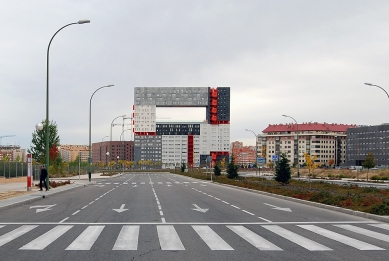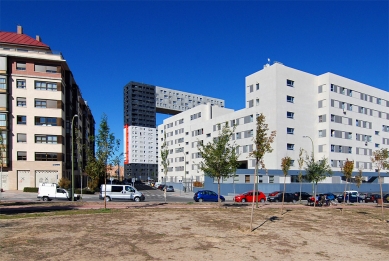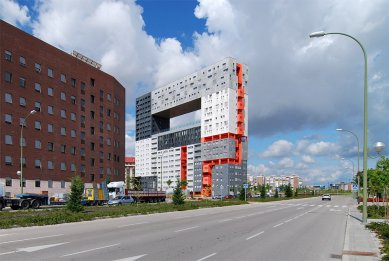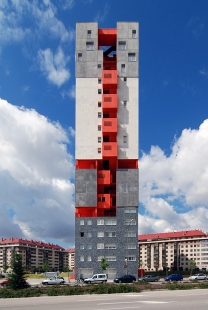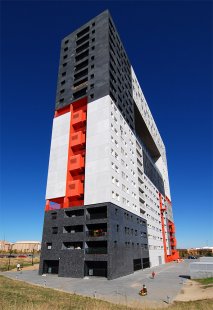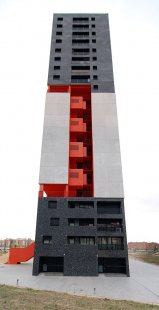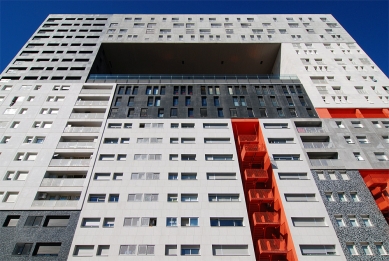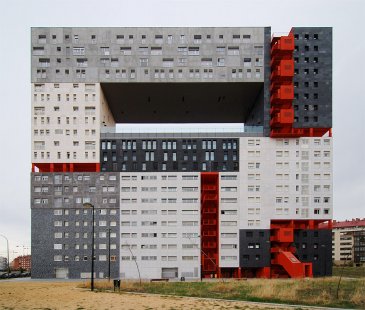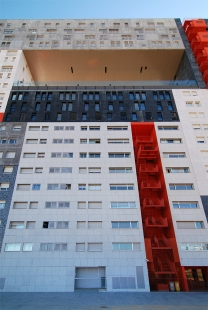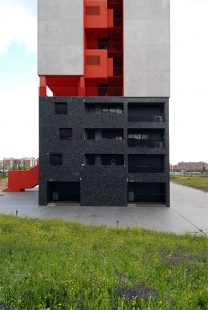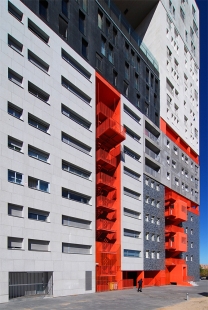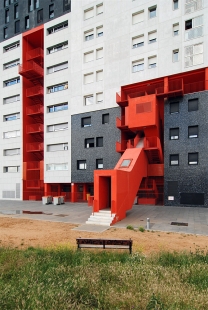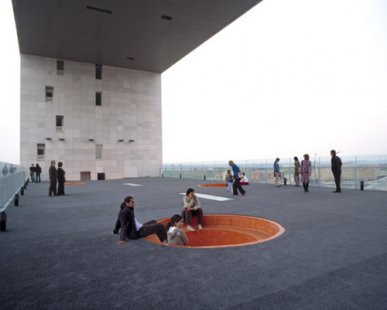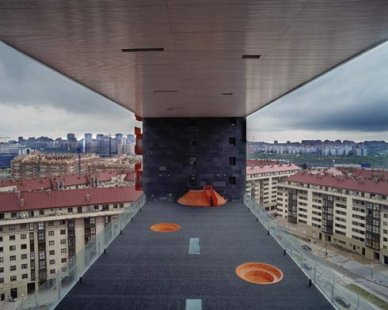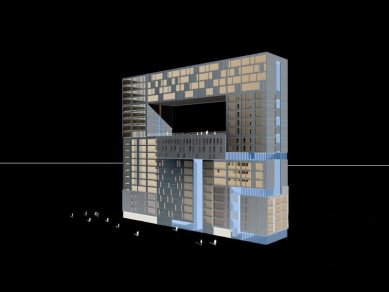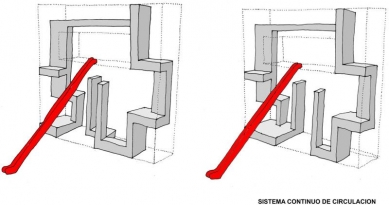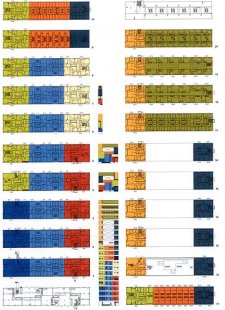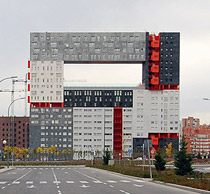 |
The opening of European borders has caused a real estate boom in Spain. Land value has increased enormously, thus leading to an enormous production of housing. This operation is facilitated in Madrid by giant new neighborhoods that surround the old city. A series of new cities that are mainly constructed of blocks that surround a private patio, with a more or less introverted architecture with small windows, somehow is allowed to oppose the traditionally extraverted Spanish culture. In PAU de Sanchinarro, one of these new cities, situated on the northeast edge of Madrid, two plots are given to develop a possible “escape” from the uniformity and claustrophobia of this sea of six-story blocks. In the first “escape,” the block of houses that surround an inaccessible patio is “flipped” so that a public patio can be created with a view of the city and the Guadarrama Mountains. The tower preserves open space needed by the modern city. The large lookout at 40 meters above the ground provides occupants and neighbors with a community garden and a space from where they can contemplate the skyline. The proposal opens domestic architecture to the new city environment and to its surrounding territories. The semi-public sky plaza will be easily accessible with a direct lift connection from the plaza surrounding the building. An outside escalator turned out to be too expensive for the social housing budget.
This lifted public space is surrounded by different neighborhoods, a wide variety of compact housing types integrating different social groups and lifestyles. In contrast to the serial and rationalist repetition of the standard family unit, the housing units are grouped in small “buildings.” These “blocks,” stacked and glued together, make up a new towering superblock. The slits in between the blocks act as access zones. They are conceived like small vertical streets. Their transformation along each itinerary agglomerates the compendium of typologies that are structured like small suburbs. It leads to a vertical sequence of stairs, halls, platforms, and streets. It creates a vertical neighborhood.
It becomes the reference point of the neighborhood. The allowance for the realization of this building can be seen as a sincere and honest manifestation of self criticism, an admirable character element. Perhaps it is an elementary one, especially for a culture that wants to be open, vivid, and cosmopolitan.
MVRDV








